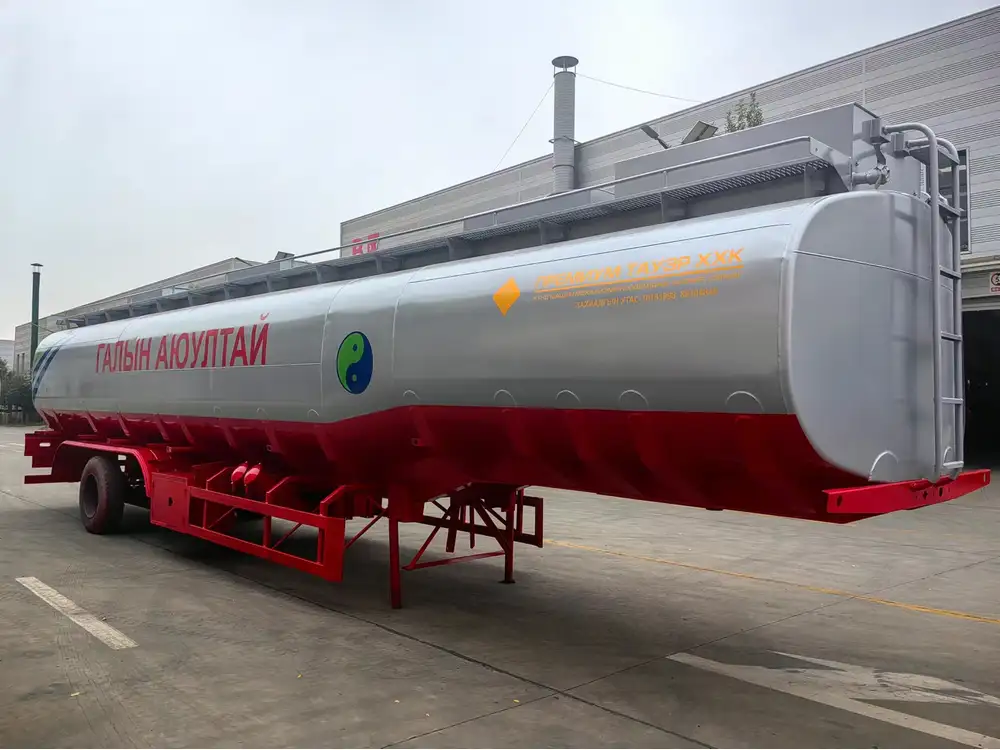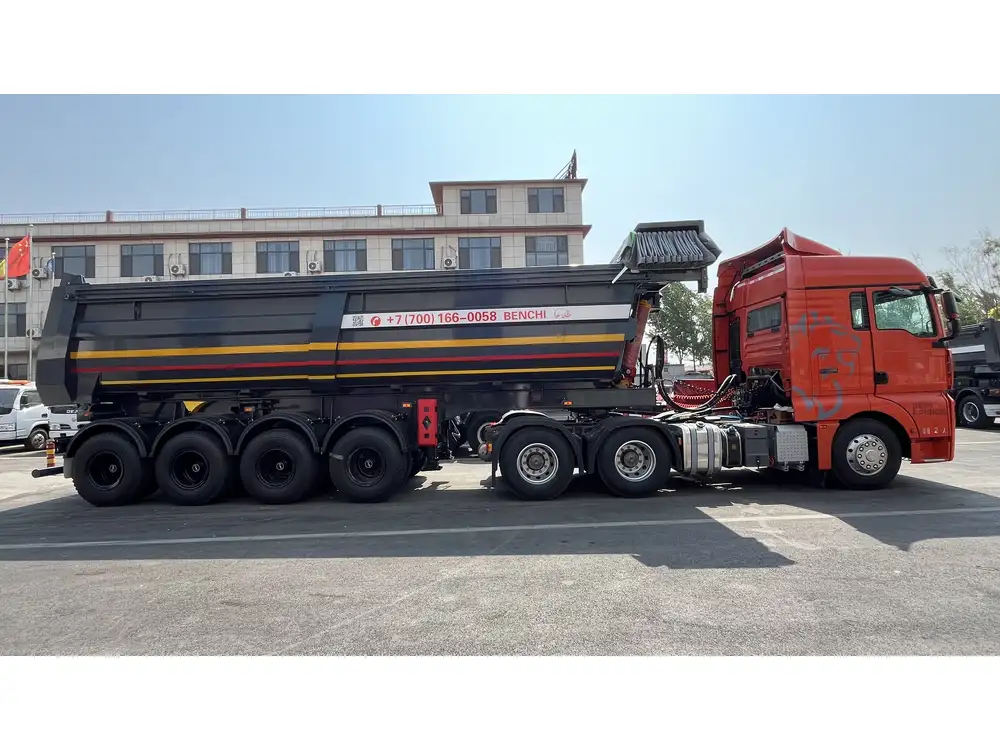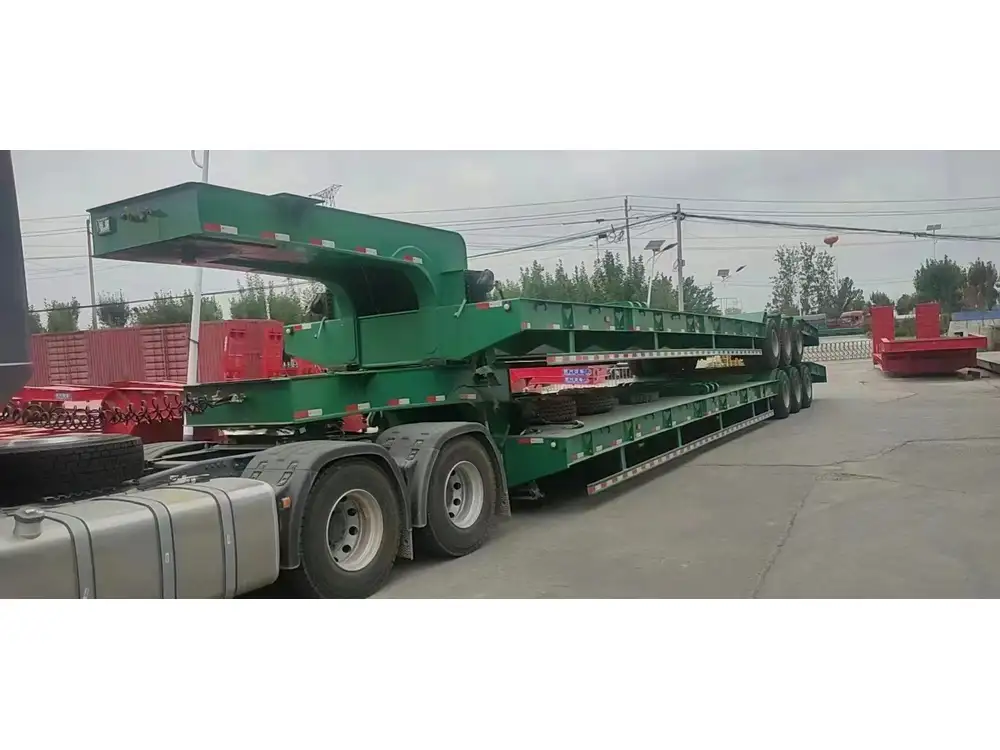Introduction to 18-Wheeler Flatbed Trailers
When it comes to heavy-duty transportation, flatbed trailers are a prevalent choice for the hauling of oversized and heavy materials. They offer versatility and easy loading capabilities, making them indispensable in various industries, including construction, manufacturing, and logistics. But how long is an 18-wheeler flatbed trailer? Understanding the dimensions of these trailers can aid in safe maneuvering on the road, better load management, and compliance with transportation regulations.
Overview of 18-Wheeler Trailers
An 18-wheeler refers to a large truck that typically consists of a tractor unit (the part that drives) and a trailer designed to carry freight. The combination of these two components makes for a robust transport solution, able to haul significant loads over considerable distances.

Standard Length of an 18-Wheeler Flatbed Trailer
Dimensions Breakdown
The length of a flatbed trailer can vary significantly based on its design and intended use. The industry standard for 18-wheeler flatbed trailers generally ranges between 48 to 53 feet. Here is a quick comparison:
| Type of Flatbed Trailer | Typical Length |
|---|---|
| Standard Flatbed | 48 feet |
| Extended Flatbed | 53 feet |
| Heavy-Duty Flatbed | Up to 60 feet (for special loads) |
Legal Considerations
While the standard lengths above are common, it’s important to consider state regulations that may affect how long a trailer can be, not only for the trailer itself but also for the overall vehicle combination total length. This total often should not exceed 65 feet to remain compliant with federal guidelines.

Importance of Trailer Length in Freight Transportation
The length of the flatbed trailer can significantly influence loading strategies, weight distribution, stability while driving, and the types of cargo that can be transported.
- Load Capacity: A longer trailer generally can carry more cargo or larger items. It could accommodate more pallets or lengthy construction supplies.
- Weight Distribution: Adequate spacing for weight distribution becomes critical to maintaining stability on the roads.
- Safety Regulations: Oversized loads require proper permitting and adherence to specific regulations, like requiring escort vehicles for particularly large or heavy loads.
Determining Factors for Choosing Trailer Length
When selecting the appropriate size of an 18-wheeler flatbed trailer, several factors must be considered:
Type of Cargo:
- Heavy machinery requires spacious flatbeds, often 53 feet or more.
- Standard equipment and smaller loads can typically be transported on a 48-foot trailer.
Route Considerations:
- Roads and highways where the trailer will travel can dictate length. For instance, urban areas may necessitate shorter trailers due to tighter turns and restricted zones.
Load Versatility:
- If you frequently switch between cargo types, a standard-sized trailer may provide the flexibility needed to accommodate various loads.
Other Considerations Related to Flatbed Trailers

Flatbed Trailer Types
The design of flatbed trailers can also vary based on their intended usage:
- Standard Flatbeds: Commonly used for easy loading and unloading of freight.
- Drop-Deck Trailers: Designed with a lower deck to accommodate taller items.
- Extendable Flatbeds: These can be lengthened for oversized loads.
Weight Ratings
Understanding Gross Vehicle Weight Rating (GVWR) is crucial. It influences not only how long your trailer can be but also how much weight can be safely towed. The GVWR typically impacts licensing, insurance, and operational costs.
Safety Measures for Using Flatbed Trailers
Proper safety measures are essential. The following practices ensure that hauling loads on flatbed trailers adheres to regulations:
- Securing Loads: Always use proper tie-downs to secure the cargo effectively.
- Regular Inspections: Conduct routine checks on trailer components, tires, and lights.
- Understanding Load Limits: Adhere strictly to weight and dimension limitations to avoid legal issues.

Conclusion: Selecting the Right Flatbed Trailer Length
Ultimately, understanding how long an 18-wheeler flatbed trailer is and the intricacies involved in selecting the appropriate size is crucial for anyone involved in freight transportation. By dissecting the many factors—ranging from cargo type and weight capacity to adherence to safety regulations—it enhances operational efficiency, safety, and compliance.
FAQs About 18-Wheeler Flatbed Trailers
What is the most common length of flatbed trailers?
The most common lengths for flatbed trailers are 48 feet and 53 feet.Can flatbed trailers carry oversized loads?
Yes, but this typically requires special permits and escort vehicles based on state and federal regulations.How do I determine the weight limit for my flatbed trailer?
Consult the manufacturer’s guidelines or the GVWR label, which lists the maximum weight the trailer can safely carry, including its own weight.Are there specific routes for oversized loads?
Yes, most states designate specific routes for oversized loads and require permits for transport, which can restrict the journey’s path.
By grasping the nuances of trailer length and their implications on transportation practices, industry professionals can better navigate their operational landscapes, ensuring that they meet all necessary requirements while maximizing efficiency and safety in the transportation of goods.



